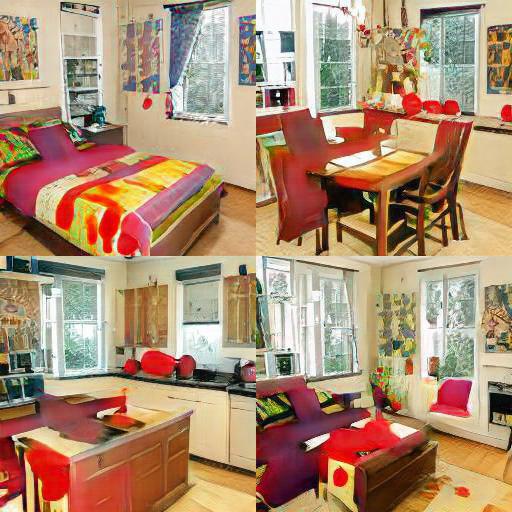When I started out this weekend, I did not expect that I would be using the fevered dreams of computer-driven neural nets to invent imaginary AirBNB listings, but here we are.

On Thursday evening, I ran into This Person Does Not Exist for the first time, a simple website that does one only one thing: return a JPG of a realistic-looking person which is invented out of whole cloth. The images produced by this website are not simply stock photos pulled from the internet: rather, they are the result of thousands of hours of computer time spent looking at more than a million pictures of people to create an image of what a person looks like.
The result is pretty compelling: while some images still have obvious artifacts, for the most part, the result is a compelling image that would not result in a second look if you were glancing past it on your social media timeline. These images are produced by a model called StyleGAN. This implementation was published in a paper late last year, and released publicly last week, including the pre-trained faces model behind the website. The creator of This Person Does Not Exist, Phillip Wang, explained in part his reason for doing this: he wanted to “raise some public awareness for this technology”, and added that “Most people do not understand how good AIs will be at synthesizing images in the future.”
Personally, I’ve always found these types of models to be difficult to understand and use. Many of the underlying technologies seem to require extensive financial commitments in order to create results, or access to datasets that are impractical for most individuals to work with. (For example, the underlying data behind the face model is several hundred gigabytes: difficult for most individuals to work with at home.)
However, with StyleGAN, NVidia published their trained models, and folks quickly took to the code and created a set of Python notebooks on Google’s “Colab” platform. In digging into them, I found that Colab simply gives you access to an underlying cloud instance, with a GPU (or TPU, as I learned later) attached… for free, with no costs or startup efforts required.
This means that rather than running these models requiring me to run tasks on my local computer – repairing a long-broken GPU-based tensorflow environment – I could instead simply click a few buttons, and generate images and videos from any of the half dozen pre-trained models that were out there.
With these tools in hand, I set about playing with the models, and learned a ton of stuff in the process. And in the end, I produced This AirBNB Does Not Exist.
I’ll be digging into more of how I got here, including instructions on how to create your own website like this, over the next couple weeks. If you’re interested in hearing about new updates, make sure to subscribe to this blog (RSS) or to my weekly newsletter!
